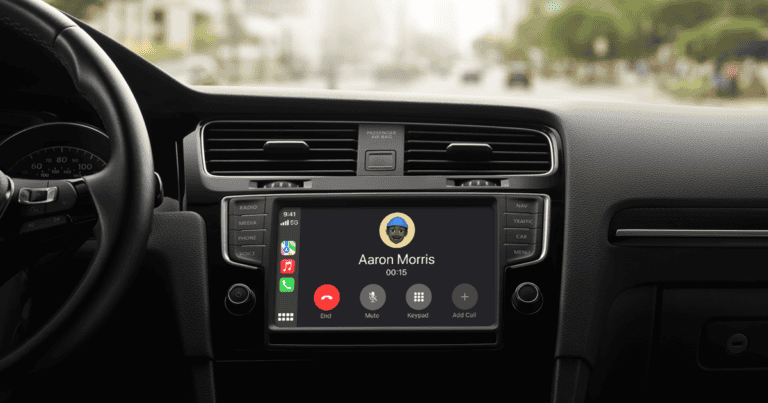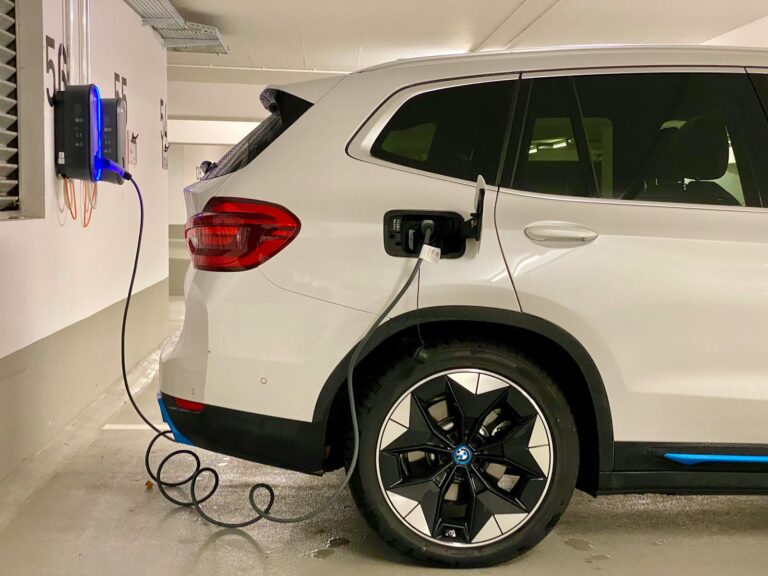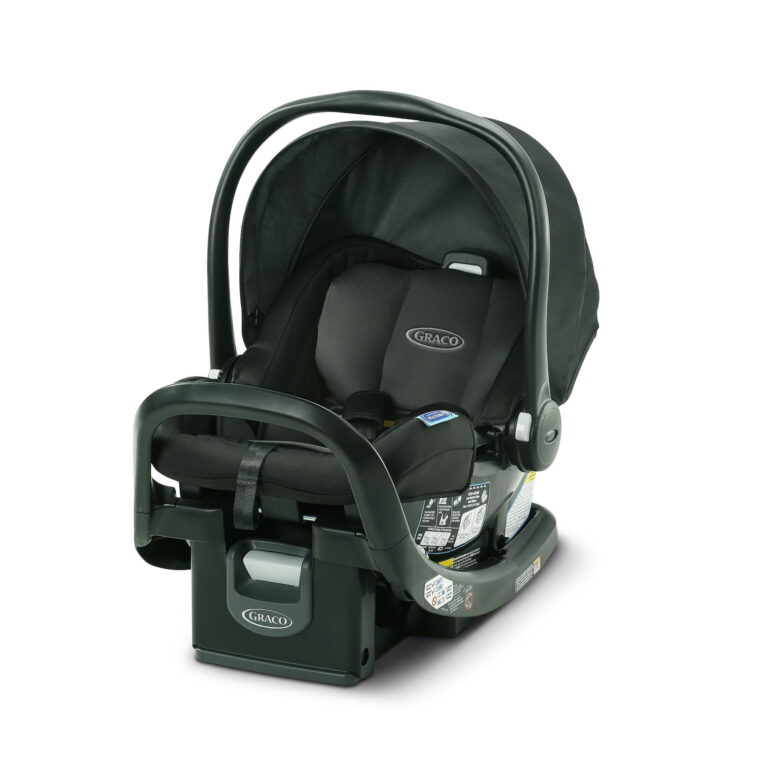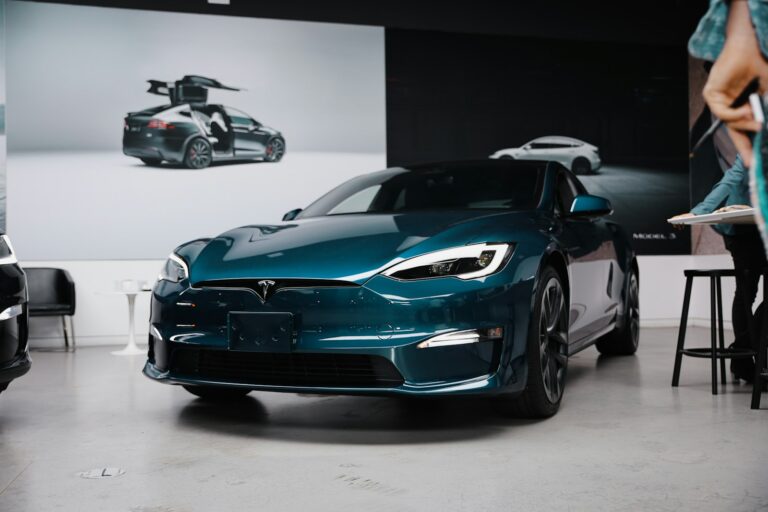
Driving requires your full attention, but our phones often compete for it. Every time you glance at a notification or answer a call, you’re putting yourself and others at risk. Taking your eyes off the road for just five seconds at 55 mph means you’ve traveled the length of a football field blindfolded. This sobering reality is why finding effective ways to manage phone distractions is crucial for every driver.
Many accidents happen because drivers can’t resist checking their phones. The good news is that there are simple solutions to help you stay focused. From hands-free apps to Do Not Disturb features, technology offers ways to minimize distractions while still keeping you connected in emergencies.
Safe Driving Tips To Avoid Distractions
Using your phone while driving — whether for texting, calls, or apps — is one of the leading causes of distracted driving accidents. Staying focused protects you, your passengers, and everyone else on the road.
1. Put Your Phone Out of Reach
- Place it in the glove box, back seat, or bag so you’re not tempted to grab it.
- If you need it for navigation, mount it securely and set your route before driving.
2. Use “Do Not Disturb While Driving” Mode
- On iPhone: Settings → Focus → Driving → Turn On Automatically.
- On Android: Settings → Digital Wellbeing → Do Not Disturb → Driving Mode.
- This blocks notifications and can send auto-replies to let others know you’re driving (source: RatedDriving).
3. Rely on Voice Commands
- Use Siri, Google Assistant, or your car’s built-in voice control for calls, texts, and navigation.
- Keep your hands on the wheel and eyes on the road.
4. Plan Before You Drive
- Set your playlist, podcast, or GPS before starting the car.
- If you need to change something, pull over safely first.
5. Use Apps That Block Distractions
- Apps like DriveSafe.ly, Android Auto, and Apple CarPlay can limit what you see and do while driving.
- Some apps lock your phone entirely until you reach your destination.
6. Make It a Habit
- Tell friends and family you won’t answer while driving.
- Treat your car as a phone-free zone.
- Reward yourself for distraction-free trips.
✅ Quick Safety Checklist
| Action | Why It Works |
|---|---|
| Put phone out of reach | Removes temptation |
| Enable driving mode | Blocks alerts |
| Use voice control | Keeps eyes on road |
| Plan ahead | Avoids mid-drive setup |
| Blocking apps | Enforces safe habits |
| Phone-free rule | Builds long-term discipline |
Key Takeaways
- Put your phone out of reach or use Do Not Disturb mode while driving to eliminate the temptation to check notifications.
- Use hands-free technology for essential calls and keep your eyes on the road at all times.
- Limit in-car activities and passenger distractions to maintain cognitive focus on driving.
Understanding the Risks
Distracted driving poses serious dangers on the road, especially when phones are involved. The data shows alarming trends about how phone use affects driving ability and safety outcomes.
The Statistics of Distracted Driving
Distracted driving is a major safety issue on American roads today. Research consistently links texting or using a cellphone while driving to increased crash risk. This isn’t just a minor concern – it’s a leading cause of accidents.
According to safety experts, drivers who use their phones behind the wheel are significantly more likely to be involved in a collision. When you look at your phone, your eyes leave the road for an average of 5 seconds. At 55 mph, that’s like driving the length of a football field blindfolded.
The numbers are especially concerning for younger drivers. Teens and young adults have the highest rates of distraction-related crashes, often involving phone use. Many states have enacted laws specifically targeting phone use while driving due to these statistics.
Consequences of Phone Use While Driving
Using your phone while driving can lead to serious repercussions beyond just the immediate safety risks. The most severe consequence is the potential for crashes resulting in injuries or fatalities – consequences that can permanently alter lives.
Legally, you face significant penalties for distracted driving in most states. These may include:
- Heavy fines (often increasing with repeat offenses)
- Points on your driving record
- Insurance rate increases
- License suspension in severe cases
Professional drivers may face termination if caught using phones on the job. Many employers now have strict policies against any phone use while operating company vehicles.
Beyond legal consequences, the psychological impact of causing harm to yourself or others due to distracted driving can be devastating and long-lasting.
Legal Implications
Using your phone while driving isn’t just dangerous—it’s against the law in most places. Breaking these laws can lead to hefty fines, points on your license, and even jail time in serious cases.
Distracted Driving Laws
Most states have enacted specific legislation targeting distracted driving. In California, the law prohibits all drivers from using handheld cell phones while operating a vehicle. This means you cannot hold your phone in your hand while driving, even at a stoplight.
Some states have primary enforcement laws, which allow officers to pull you over solely for using your phone. Others have secondary enforcement, meaning you must be stopped for another violation first.
For novice drivers and bus drivers, the rules are often stricter. Many states ban all cell phone use for these groups, including hands-free options.
Penalties for Phone Use Behind the Wheel
The consequences for distracted driving vary by state but typically include:
Financial Penalties:
- First offense: $20-$500 fine
- Repeat offenses: Increased fines (often doubled)
- Insurance rate increases averaging 23% after a distracted driving citation
Legal Consequences:
- Points on your driving record
- License suspension (especially for repeat offenders)
- In cases involving accidents, potential criminal charges if injuries or fatalities occur
Some courts now offer diversion programs where first-time offenders can take a distracted driving course instead of paying a fine. These programs aim to educate rather than simply punish.
Remember that these penalties continue to become more severe as awareness of distracted driving dangers increases.
Preventive Strategies
Creating systems to manage your phone before and during drives helps eliminate dangerous distractions. These habits can become automatic with practice, making your driving safer for everyone on the road.
Making a Habit of Silence
Turn on Do Not Disturb mode before starting your car. Most phones have driving-specific settings that automatically silence notifications while you’re moving. This prevents the temptation to check incoming messages.
If you need navigation, set it up before putting the car in drive. Mount your phone on the dashboard rather than holding it or placing it on your lap.
Consider using apps specifically designed to block texts and calls during driving. Many will send automatic replies letting others know you’re driving.
Make it a rule to keep your eyes on the road. If you’re traveling with passengers, ask them to handle any necessary phone tasks for you.
Pre-Drive Phone Management
Plan ahead by making important calls before your trip starts. Inform regular contacts about your typical driving schedule so they know when not to expect immediate responses.
Consider these pre-drive preparations:
- Finish text conversations before starting your car
- Set up playlists or podcasts before driving
- Make a habit of placing your phone in a designated spot
- Enable voice commands for essential functions
Use hands-free options like Bluetooth connections or built-in infotainment systems if you absolutely must use your phone. Remember that even hands-free calling divides your attention.
For longer trips, take regular breaks to check messages safely while parked. This gives you peace of mind without risking safety.
Technology Assistance
Modern technology offers innovative solutions to prevent phone distractions while driving. These tools can help you stay focused on the road and resist the urge to check your device.
Apps to Minimize Distractions
Several smartphone applications are designed specifically to reduce driving distractions. Apps like Do Not Disturb While Driving (iPhone) and Android Auto automatically silence notifications when they detect you’re in motion.
Some advanced apps go further by:
- Blocking incoming calls and texts while your vehicle is moving
- Sending automatic replies to let people know you’re driving
- Providing rewards or points for distraction-free trips
- Tracking your driving habits to help improve safety
Parents can use specialized apps to monitor their teen drivers and ensure they aren’t using phones while driving. These tools often provide driving reports and alerts for unsafe behavior.
Built-In Vehicle Features
Many newer vehicles come equipped with technology that helps prevent distractions. Bluetooth connectivity allows for hands-free calling and text-to-speech capabilities, reducing the need to look at your phone.
Voice command systems let you control navigation, climate, and entertainment without taking your hands off the wheel. Look for these helpful features:
- Steering wheel controls for common functions
- Heads-up displays that project information on the windshield
- Apple CarPlay and Android Auto integration
- Driver attention monitoring systems
Some manufacturers have implemented driver monitoring technologies that can detect signs of distraction and provide alerts. These systems use cameras or sensors to track eye movements and driving patterns.
Enhancing Focus
Staying focused while driving requires intentional practices that help you stay present and aware of your surroundings. These strategies can significantly reduce your risk of accidents and keep you and others safe on the road.
Mindful Driving Practices
Put your phone out of reach while driving. Place it in the glove compartment, backseat, or trunk where you won’t be tempted to check it.
Use technology to help you stay focused. Enable the “Do Not Disturb While Driving” feature on your phone, which automatically silences notifications when you’re in motion.
Consider using apps specifically designed to prevent distracted driving. Many will send auto-replies to texts and calls, letting others know you’re driving and will respond later.
Create a driving routine before starting your car:
- Adjust your mirrors and seat
- Set your GPS destination
- Choose your music or podcast
- Complete any necessary calls or texts
This preparation eliminates the need to fiddle with controls or devices once you’re moving.
Awareness Techniques
Practice mindful driving by regularly scanning your surroundings. Develop a habit of checking your mirrors every 5-8 seconds to maintain awareness of nearby vehicles.
When you notice your mind wandering, gently bring your attention back to the road. Use physical landmarks as mental check-in points during familiar routes.
Keep calm behind the wheel by practicing deep breathing when feeling stressed or impatient. Count to four as you inhale, hold briefly, then exhale slowly.
Limit conversations with passengers during challenging driving conditions like heavy traffic, bad weather, or unfamiliar routes. Don’t hesitate to ask passengers to help with navigation or to quiet down when you need to concentrate.
Planning and Organization
Good preparation before driving can help you avoid phone distractions. Taking a few minutes to plan ahead lets you focus fully on the road when you’re behind the wheel.
Scheduling Stops for Phone Use
Plan regular breaks during longer drives when you need to use your phone. Pull over if you need to complete a task like making calls, sending texts, or checking emails. Rest areas, gas stations, and restaurant parking lots make safe stopping points.
Consider timing your stops every 1-2 hours. This helps you stay alert while driving and gives you dedicated time for communication.
Before starting your car, tell contacts you’ll be driving and when you’ll be available. Setting expectations reduces the urge to answer immediately.
Use your phone’s “Do Not Disturb While Driving” mode to schedule automatic replies that inform others you’re driving and will respond later.
Organizing Your Route and Tasks
Set up your GPS or navigation app before starting your journey. Program all destinations in advance so you won’t need to touch your phone while driving. If you need to adjust your route, pull over to a safe location first.
Create a pre-drive checklist:
- Check and respond to important messages
- Make necessary calls
- Review your route
- Set up music playlists or podcasts
Use voice commands for essential functions while driving. Many vehicles and phones offer hands-free options that let you maintain visual contact with the road.
If traveling with passengers, ask them for help managing navigation, calls, or texts so you can focus entirely on driving.
Emergency Communication
While avoiding phone use while driving is important, knowing how to handle emergencies safely is essential. The right setup and protocols can help you stay safe while managing urgent situations.
Setting Up Automatic Replies
Set your phone to automatically respond to incoming calls and texts while you’re driving. Most smartphones have built-in “Do Not Disturb” modes that activate when motion is detected or when connected to your car’s Bluetooth.
These features can send auto-replies letting others know you’re driving and can’t respond immediately. You can customize these messages to indicate when you’ll check messages again.
For iPhones, enable “Driving Focus” in your settings. Android users can use the “Driving Mode” feature. Both will silence notifications and send automatic replies to incoming messages.
Consider mentioning in your auto-reply message that you’re only available for emergencies and how someone should reach you if absolutely necessary.
Safe Communication Protocols
If you must communicate during an emergency while driving, follow specific safety measures. The most important rule is to find a safe place to pull over before making any calls or sending messages.
If stopping isn’t immediately possible, use voice commands or hands-free options. Many newer vehicles have integrated systems allowing for voice-activated calls without taking your hands off the wheel.
Keep emergency conversations brief and focused. Tell the caller immediately that you’re driving and need to keep the call short.
Consider designating emergency contacts in your phone for quick access. Some apps allow you to set up emergency contacts that can be reached with minimal interaction with your device.
Educational Efforts
Understanding the dangers of distracted driving is crucial for changing behavior. Educational programs help drivers recognize risks and develop safer habits behind the wheel.
Information Campaigns
Many organizations create awareness campaigns about distracted driving that target different age groups. These campaigns often use compelling statistics and real-life stories to show the serious consequences of taking your eyes off the road.
The National Highway Traffic Safety Administration (NHTSA) runs the “U Drive. U Text. U Pay.” campaign, which combines education with enforcement periods. This approach has proven effective in changing driver behavior.
State transportation departments also create billboards, TV commercials, and social media content that remind you about the dangers of phone use while driving. Many campaigns use the slogan “It Can Wait” to emphasize that no message is worth risking your life.
Some campaigns specifically target teen drivers through school programs and require parent-teen driving agreements that include no-phone pledges.
Driver’s Education on Distracted Driving
Modern driver’s education programs now include substantial content about distraction risks. These programs teach you practical strategies for managing potential distractions before starting your vehicle.
Driving schools often use simulators that demonstrate how quickly accidents can happen when your attention shifts to a phone. These hands-on experiences create lasting impressions about reaction time and stopping distance.
Many programs now include the S-M-A-R-T approach for preventing distracted driving:
- Set up your route and vehicle before driving
- Manage your environment (music, temperature)
- Ask passengers to help with navigation
- Restrict your phone use completely
- Talk about safe driving with friends and family
Continuing education courses for licensed drivers also emphasize new research about multitasking myths and cognitive distraction factors that weren’t understood when many adults first learned to drive.
Peer Influence
Friends and passengers in your car can either help you drive safely or become dangerous distractions. Managing social interactions while driving requires clear boundaries and mutual respect for safety.
Passenger Responsibilities
When riding with friends, don’t give in to peer pressure that might encourage unsafe driving behaviors. Let your passengers know that your primary responsibility is driving safely.
Ask your passengers to help you stay focused by:
- Managing the music or GPS
- Answering texts or calls for you
- Remaining reasonably quiet during challenging driving conditions
- Avoiding showing you videos or photos that take your eyes off the road
Be mindful of who is in your car and how they affect your concentration. Some friends may be more distracting than others, especially in groups.
If passengers become too rowdy or distracting, don’t hesitate to pull over safely until everyone calms down. Your decision to prioritize safety over entertainment shows maturity and responsibility.
Remember that as the driver, you’re legally responsible for everyone’s safety. Good passengers will respect your need to concentrate and even help you avoid other distractions.
Frequently Asked Questions
Driving distractions pose serious safety risks on the road. These common questions address practical methods to stay focused and avoid phone use while driving.
How can one effectively manage distractions to maintain focus while driving?
To maintain focus while driving, put aside your cell phone completely. Place it in a spot where you can’t reach it easily, like the glove compartment or backseat.
Consider using the “Do Not Disturb While Driving” mode available on most smartphones. This feature automatically sends replies to incoming texts letting people know you’re driving.
Create a pre-driving routine where you adjust settings, choose music, and set your navigation before putting the car in gear. This preparation eliminates many reasons you might reach for your phone later.
What are some successful strategies to prevent distracted driving?
Reserve your phone for emergency situations only while driving. Program important numbers for voice dialing if your vehicle supports this feature.
If you feel drowsy, pull off the road to a safe location. Drowsiness multiplies the danger of other distractions and significantly impairs your reaction time.
Limit the number of passengers in your vehicle, especially if you’re a new driver. Each additional person increases the potential for distraction.
What technological tools or apps can assist in reducing the temptation to use a phone while driving?
Apps like Drivemode and LifeSaver block incoming notifications while you’re driving and can automatically respond to texts with a message that you’re on the road.
Many newer vehicles offer Apple CarPlay or Android Auto integration, allowing essential phone functions through your car’s interface with voice commands.
Bluetooth hands-free systems enable you to make necessary calls without handling your phone, though it’s best to avoid dialing handheld phones entirely while driving.
What types of distractions within the vehicle should drivers be aware of?
Eating, drinking, and applying makeup while driving divides your attention. Save these activities for when you’re parked to maintain full control of your vehicle.
It’s illegal to wear headphones or earplugs in both ears when driving in many states, including California. They block crucial environmental sounds like emergency vehicles.
Loose items in your car can become distractions when they shift or fall during travel. Secure objects properly before starting your journey.
How can you adjust your driving habits to deal with distractions you encounter on the road?
Maintain a safe following distance to give yourself more reaction time if you encounter unexpected distractions. This extra space creates a buffer for safety.
Train yourself to avoid visual distractions by keeping your eyes moving and scanning the road ahead. Resist the urge to look at roadside incidents.
Drive defensively and anticipate other drivers’ actions. Being prepared for others’ distracted driving helps you respond more effectively.
What steps can you take to ensure you stay focused and avoid using your phone while at the wheel?
Tell friends and family about your commitment to distraction-free driving. When they know you won’t respond while driving, they’ll be less likely to expect immediate replies.
Create a driving playlist before your trip so you won’t need to select music while on the road. Set it to play automatically when you connect to your car.
If you must use navigation, set your destination before departing and use a mount positioned at eye level. This reduces the need to look down or handle your phone while driving.






